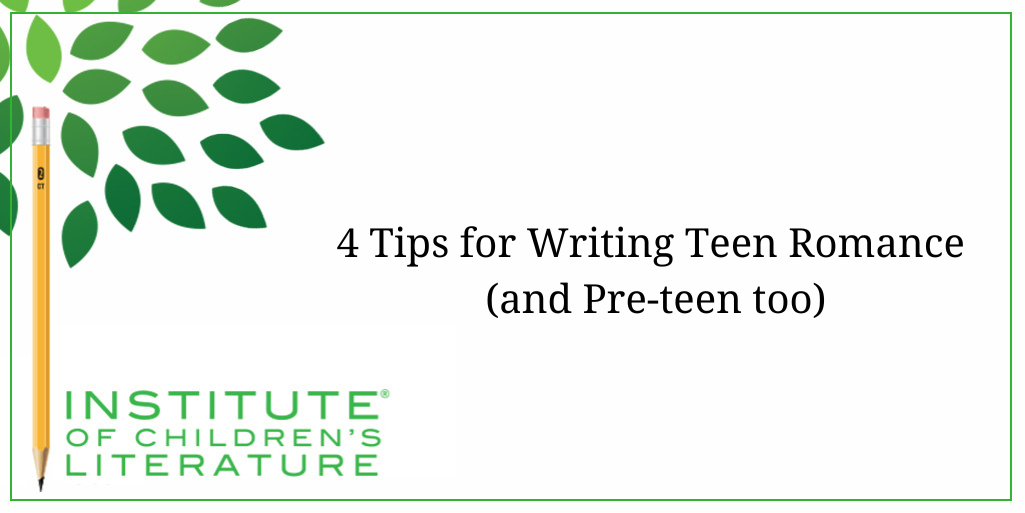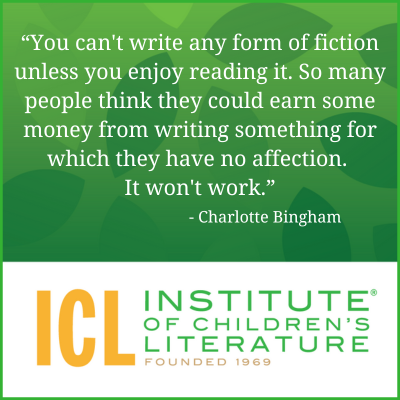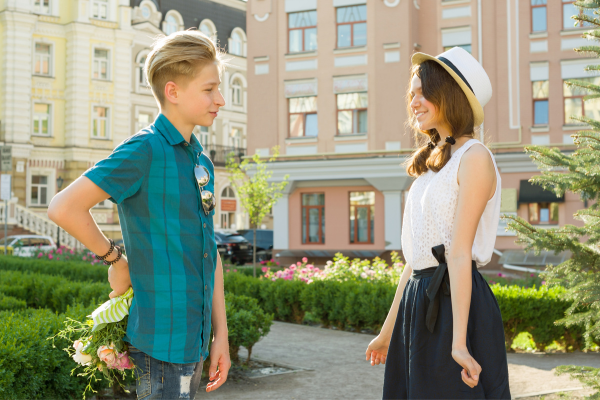
5 Ways Writers Can Prep for 2025 Goal Setting
Before we roll on to the new writing year, let’s harness our optimism for the blank slate before us and prepare for our 2025 Goal Setting just for writers.

Romance as a main plot or simply as side plots are an almost ubiquitous part of young adult fiction. It’s rare that you find a young adult novel without any romantic moments or elements. And romance can appear in upper middle grade as well, though it will always be very sweet romance and almost always as a minor side element. If you think about it, many of the classic stories you heard as quite young children had romantic plots or subplots: Cinderella, Snow White, Rapunzel, and Beauty and the Beast. Romance does pop up nearly everywhere so it’s worthwhile to think about how it works in fiction. Here are 4 tips for writing teen romance.
Though YA books can have very central romantic plots, they are rarely what the book is about. YA books nearly always explore big themes, and most are coming-of-age stories. The romance comes about partly because the books are about maturing and stepping into more adult roles and interactions. As a result, romance is present and important, but it is almost always a side element. It happens because of the plot, rather than the plot happening because of the romance.

When writing teen romance, never try to force a romantic moment because you know YA books have romance. The results can be flatly ridiculous, such as having characters pause to kiss in their headlong rush to escape a monster. Readers need to believe that these characters would have this moment in this situation. Instead of trying to force a moment because you think it’s probably time for romance to pop up again, keep romance in the back of your mind, and when it occurs naturally, let it happen.
YA romances can be sweet with little (or no) on-the-page physicality, or they can be relatively explicit (though even then, the events on the page happen because they logically would happen in the story situation with the story characters. Sex is never gratuitous. Its appearance may shock some adult readers, but it only belongs in the book if it needs to be there in this story moment.) Romance when written for audiences that are young teens or even pre-teens will always be sweet, and require a careful, light touch. Twelve-year-old characters, for example, may have crushes but they are unlikely to do more than stammer and maybe hold hands. Keep in mind that the more you put on the page, the older the characters and the readers should be.

Another reality is that if you write sex on the page, someone, somewhere is going to ask you about it. And writing something in the quiet of your office is a very different situation from talking about it in public. If you make the choice to write more explicit scenes because they are demanded by this plot and these characters, you need to prepare yourself for possible negative reactions and for the questions you’ll be asked about why you made the decision. Practicing answers without blushing or stammering might be worth your time.
One of the most important moments in any romantic storyline is the one where your two characters meet. The moment is likely to be awkward. Keep in mind that social interaction is often awkward in coming-of-age stories so romantic interactions will tend to mirror that. The characters may find themselves in new situations and dealing with new demands. The initial meeting may not seem terribly important, but it should show us something important about one or both characters. Often that “something important” is a small spark of attraction, though not always. An initial meeting might be (on the surface) totally hostile and angry. Change is the key to all YA stories, so readers know all interactions could change. Still, you don’t want anything in this initial meeting to make future change feel forced or impossible.

A trope, in this instance, refers to a common theme or plot structure seen frequently in the Romance genre. Your novel may not be a traditional romance at all, but you may still see these romantic tropes pop up in the unfolding of the romantic subplot. For example, in Silvia Moreno-Garcia’s novel, Mexican Gothic, the forced-proximity trope is seen in the slow-building romance between the main character and her eventual romantic interest. At first, she isn’t interested in him at all. He isn’t the sort of man who would catch her eye. He’s not handsome or self-assured.
However, the Gothic setting and plot forced the two together over and over, and the shared burden of trying to survive the book and deal with the bizarre situation contributes to building a relationship between the two of them based on something deeper than surface attraction. A trope may unfold in an almost endless way. A forced-proximity trope could come from a couple stuck in a decaying house where horror unfolds, a couple stuck on an island after a plane crashes, or a couple stuck in a basement after being accidentally locked in. What keeps them physically in the same place is what allows them to overcome whatever made their romance unlikely.

Other romantic tropes include Forbidden Love (Romeo and Juliet, anyone), Unspoken Secrets (where the secret stands between the two characters, making the situation seem impossible), and Love Triangle (we can all come up with stories with this one as it’s been around a long time). The key to using any trope is to make sure it fits the overarching story plot and that it doesn’t become so predictable that readers can see the end coming from the beginning. Nothing kills reader engagement like over-predictability.
Bring it all together, remember any romantic elements in your novel need to fit with every other element of the story. Whether it’s a main storyline or a minor subplot, it must work perfectly and believably with these characters. We need to agree that this pair would overcome their differences in this situation, or that they would fight through the challenges for their happy (or not-so-happy) ending in the exact way you have written.
How ever you use romance in your story, be sure you believe in it first. You’ll never get readers to believe in anything you don’t believe in. But if you keep it real, and keep it fresh and lively when writing teen romance, your romantic plot or subplot can make for a story your readers love, talk about, and return to again and again.
What more could we ask than that?
With over 100 books in publication, Jan Fields writes both chapter books for children and mystery novels for adults. She’s also known for a variety of experiences teaching writing, from one session SCBWI events to lengthier Highlights Foundation workshops to these blog posts for the Institute of Children’s Literature. As a former ICL instructor, Jan enjoys equipping writers for success in whatever way she can.

Before we roll on to the new writing year, let’s harness our optimism for the blank slate before us and prepare for our 2025 Goal Setting just for writers.

Writers can be thin-skinned when it comes to getting feedback on their work. Let’s look at 4 ways to positively deal with constructive criticism!

Rejection is part of the territory when it comes to being a writer. Today we offer reflection for writers to help redirect your efforts after a rejection.
1000 N. West Street #1200, Wilmington, DE 19801
© 2024 Direct Learning Systems, Inc. All rights reserved.
1000 N. West Street #1200, Wilmington, DE 19801
© 2024 Direct Learning Systems, Inc. All rights reserved.
1000 N. West Street #1200, Wilmington, DE 19801
© 2024 Direct Learning Systems, Inc. All rights reserved.
1000 N. West Street #1200, Wilmington, DE 19801
© 2024 Direct Learning Systems, Inc. All rights reserved.

1000 N. West Street #1200, Wilmington, DE 19801
© 2025 Direct Learning Systems, Inc. All rights reserved.

1000 N. West Street #1200, Wilmington, DE 19801
©2025 Direct Learning Systems, Inc. All rights reserved. Privacy Policy.
4 Comments